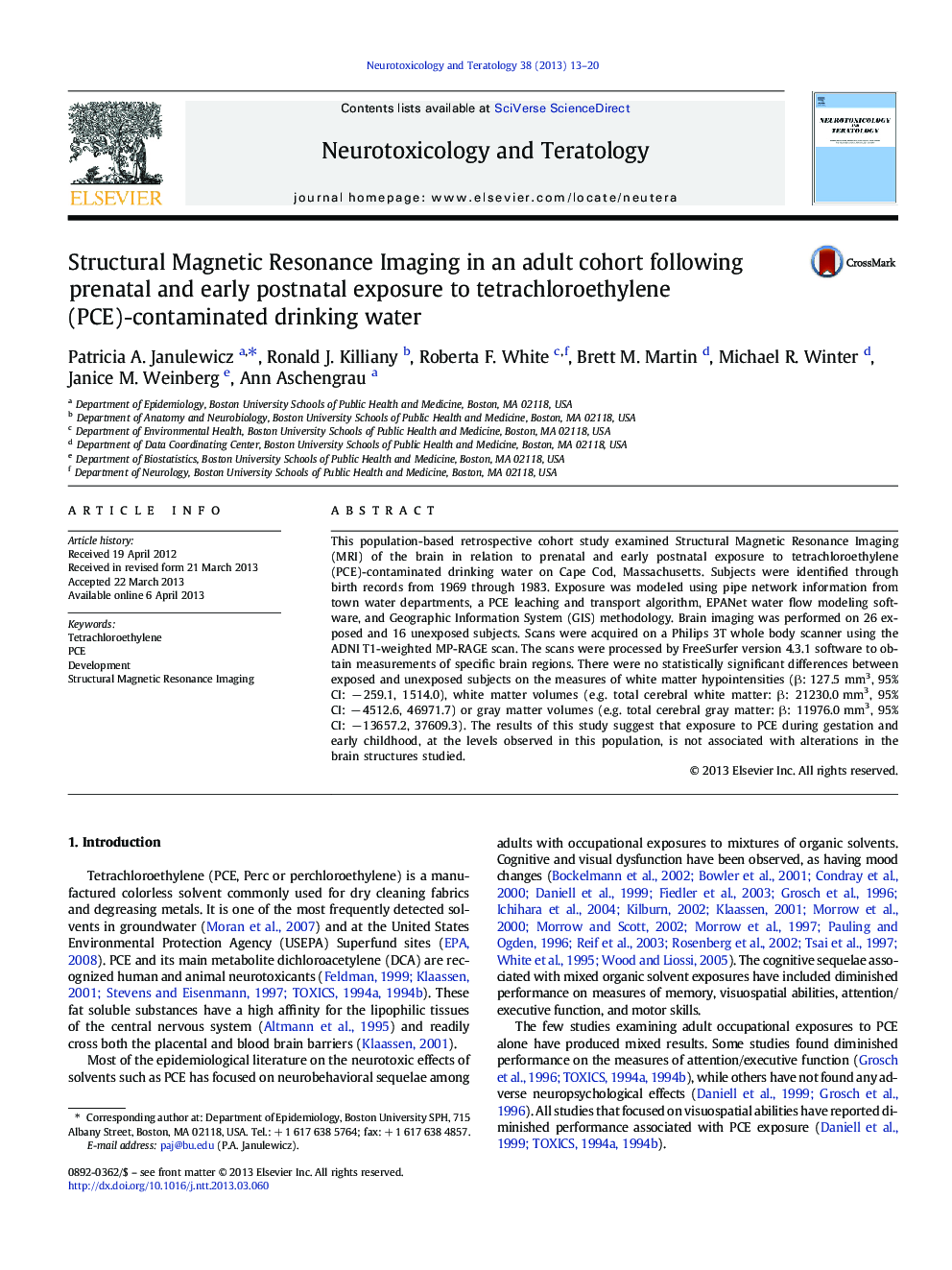| Article ID | Journal | Published Year | Pages | File Type |
|---|---|---|---|---|
| 2591298 | Neurotoxicology and Teratology | 2013 | 8 Pages |
•Our population was exposed to PCE in drinking water on Cape Cod, Massachusetts.•No meaningful differences between the groups on measures brain volume.•Results suggest prenatal PCE exposure is not associated with alterations in the brain structures.
This population-based retrospective cohort study examined Structural Magnetic Resonance Imaging (MRI) of the brain in relation to prenatal and early postnatal exposure to tetrachloroethylene (PCE)-contaminated drinking water on Cape Cod, Massachusetts. Subjects were identified through birth records from 1969 through 1983. Exposure was modeled using pipe network information from town water departments, a PCE leaching and transport algorithm, EPANet water flow modeling software, and Geographic Information System (GIS) methodology. Brain imaging was performed on 26 exposed and 16 unexposed subjects. Scans were acquired on a Philips 3T whole body scanner using the ADNI T1-weighted MP-RAGE scan. The scans were processed by FreeSurfer version 4.3.1 software to obtain measurements of specific brain regions. There were no statistically significant differences between exposed and unexposed subjects on the measures of white matter hypointensities (β: 127.5 mm3, 95% CI: − 259.1, 1514.0), white matter volumes (e.g. total cerebral white matter: β: 21230.0 mm3, 95% CI: − 4512.6, 46971.7) or gray matter volumes (e.g. total cerebral gray matter: β: 11976.0 mm3, 95% CI: − 13657.2, 37609.3). The results of this study suggest that exposure to PCE during gestation and early childhood, at the levels observed in this population, is not associated with alterations in the brain structures studied.
